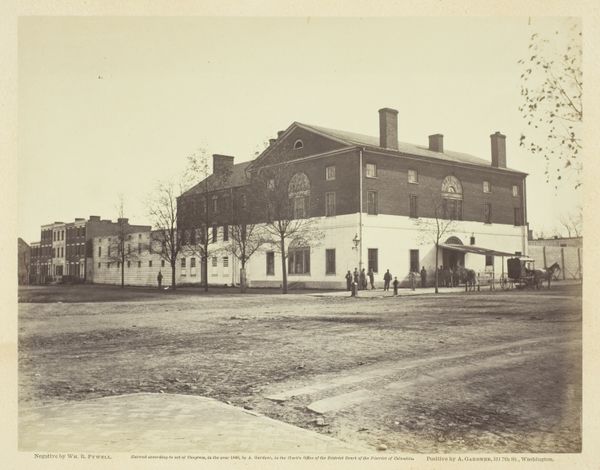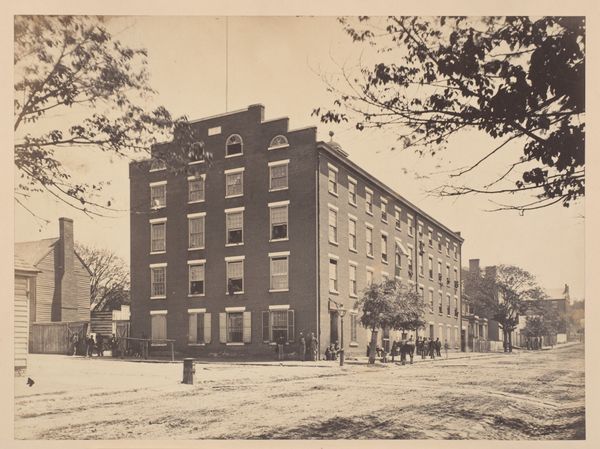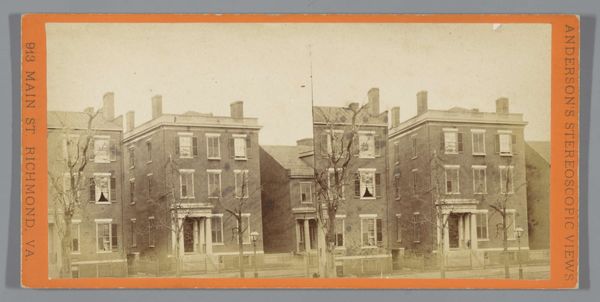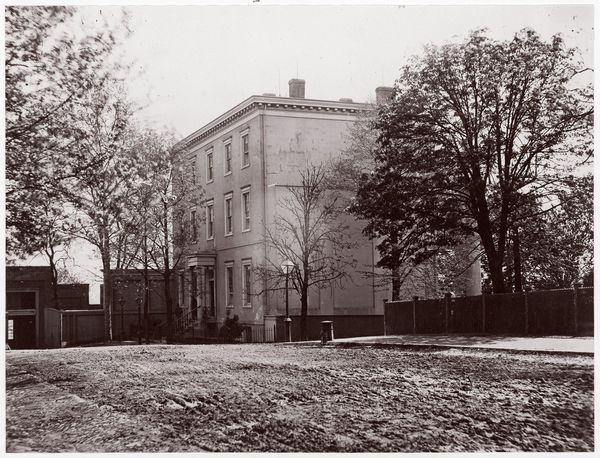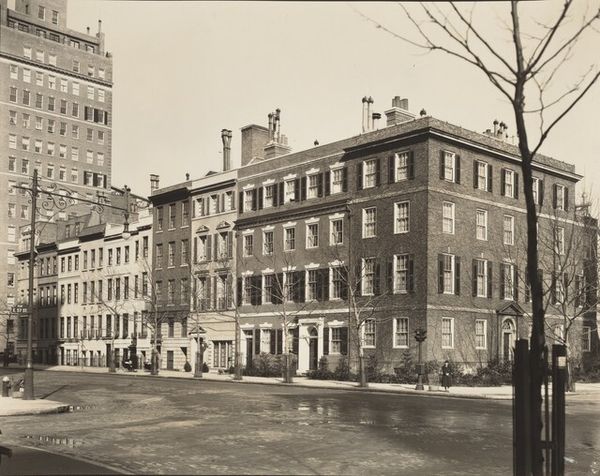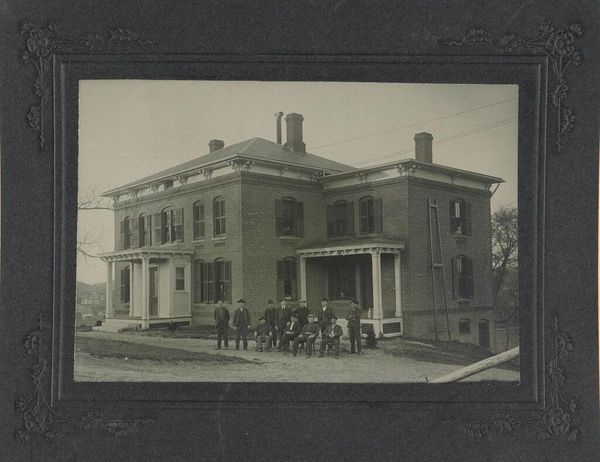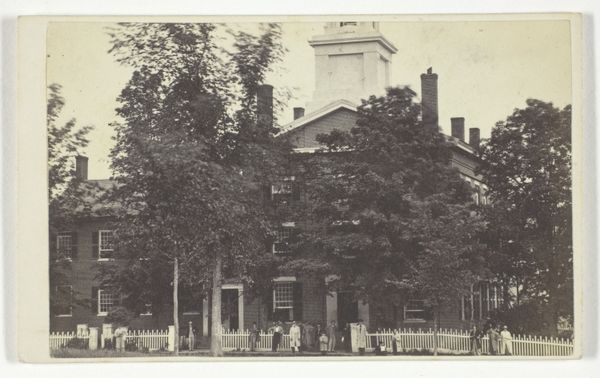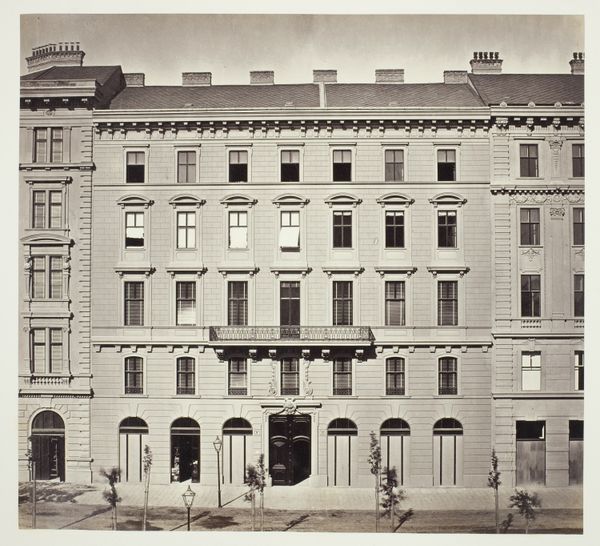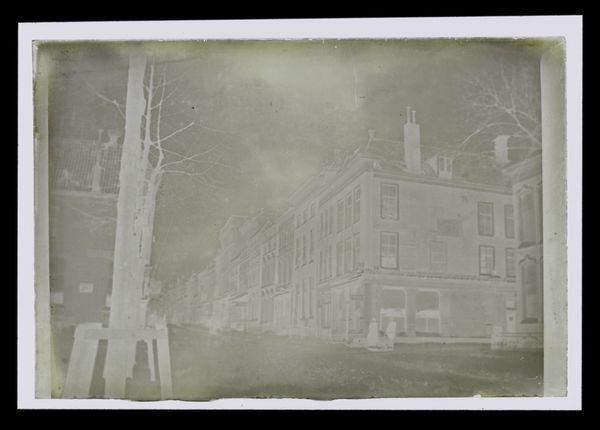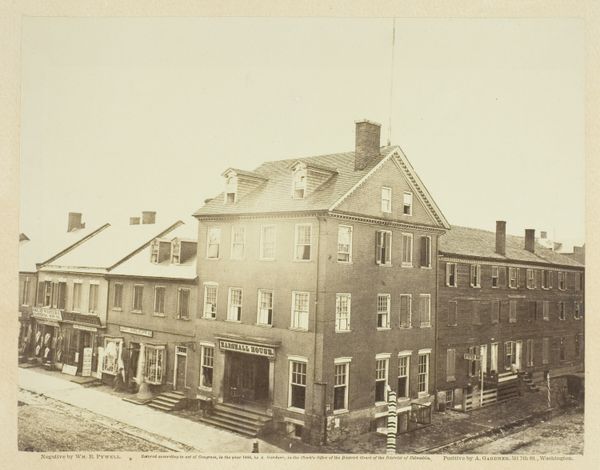![[Headquarters of U.S. Sanitary Commission, Richmond, Virginia] by Alexander Gardner](/_next/image?url=https%3A%2F%2Fd2w8kbdekdi1gv.cloudfront.net%2FeyJidWNrZXQiOiAiYXJ0ZXJhLWltYWdlcy1idWNrZXQiLCAia2V5IjogImFydHdvcmtzLzY2ZjM3OGUxLTFmZDUtNGNhOC1iMzM3LWNmMmEyZjdjMTg0Mi82NmYzNzhlMS0xZmQ1LTRjYTgtYjMzNy1jZjJhMmY3YzE4NDJfZnVsbC5qcGciLCAiZWRpdHMiOiB7InJlc2l6ZSI6IHsid2lkdGgiOiAxOTIwLCAiaGVpZ2h0IjogMTkyMCwgImZpdCI6ICJpbnNpZGUifX19&w=3840&q=75)
[Headquarters of U.S. Sanitary Commission, Richmond, Virginia] 1865
0:00
0:00
photography, gelatin-silver-print
#
portrait
#
black and white photography
#
war
#
landscape
#
photography
#
group-portraits
#
gelatin-silver-print
#
monochrome photography
#
history-painting
#
monochrome
Copyright: Public Domain
Editor: Here we have Alexander Gardner’s gelatin-silver print, "[Headquarters of U.S. Sanitary Commission, Richmond, Virginia]", from 1865. The sheer number of people outside this rather imposing building is striking. What can you tell me about it? Curator: Gardner's image compels us to consider the role of the U.S. Sanitary Commission during and after the Civil War. Far from neutral observers, they represent a complex interplay of humanitarian aid, social reform, and, implicitly, the assertion of Union power. Note the composition; the building dominates the frame, while the assembled individuals, mostly African Americans, are positioned at its base. Editor: That positioning does seem deliberate. Is it suggesting a power dynamic? Curator: Absolutely. Consider the historical context. Richmond was the capital of the Confederacy. This image, taken in the war's immediate aftermath, marks a symbolic shift. The Commission, while providing crucial medical and social services, also acted as an agent of Reconstruction, a period fraught with racial and economic tensions. What do you see in the faces of those gathered? Editor: A mix of hope and uncertainty, perhaps? Knowing what we know about the failures of Reconstruction, the image takes on a more complicated tone. Curator: Precisely. Gardner’s photograph becomes more than just a historical document; it's a visual representation of the power dynamics and unfulfilled promises of that era. It invites us to question whose stories are being told, and whose are being omitted. How do you think this photo speaks to today’s conversations about historical representation? Editor: It makes me realize that historical images can be used as evidence, but also as instruments of power, requiring a very critical eye to analyze properly. Curator: I agree. Seeing this as an intentional act gives me a renewed respect for its complexities and continued relevance in deconstructing the narratives surrounding historical events.
Comments
No comments
Be the first to comment and join the conversation on the ultimate creative platform.
